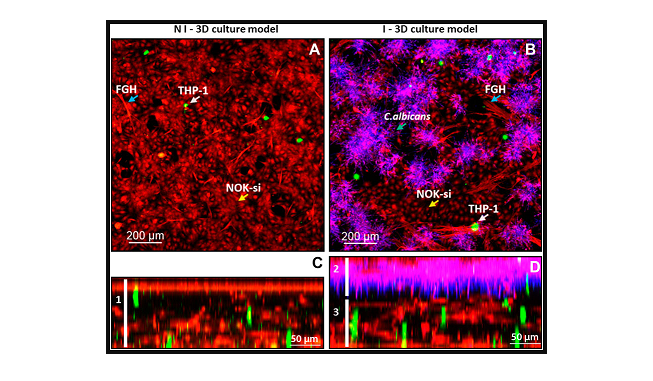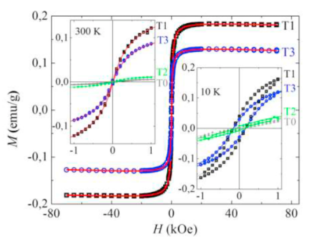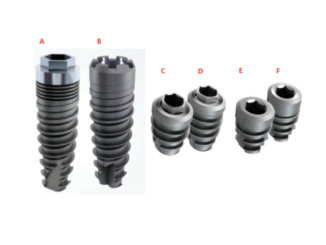
Antifungal Activity and Biocompatibility of α-AgVO3, α-Ag2WO4, and β-Ag2MoO4 Using a Three-Dimensional Coculture Model of the Oral Mucosa
Abstract: Fungal infections have become a major concern in the medical community, especially those caused by Candida spp. Within this species, Candida albicans stands out for being an opportunistic commensal fungus that can cause superficial and invasive infections. Current antifungal therapy involves the local and/or systemic use of drugs such as azoles, polyenes, and echinocandins. These antifungals are based on highly specific target sites, and the development of resistance may occur with changes in the enzymatic pathways that serve as the drug targets. Thus, the development of new antifungal drugs is highly recommended to prevent drug resistance. The present investigation evaluated the antifungal activity of silver-containing microcrystals such as silver vanadate (α-AgVO3), silver tungstate (α-Ag2WO4), and silver molybdate (β-Ag2MoO4). In addition to having antimicrobial activity, such compounds should not cause damage to underlying tissues. Thus, to better assess the biocompatibility of new compounds, a new three-dimensional (3D) coculture model involving three cell lines was developed. The validation of the model was based on fluorescent markers and confocal laser microscopy. The biocompatibility of silver-containing microcrystals was evaluated by MTT (3-(4,5-dimethylthiazol-2-yl)-2,5-diphenyltetrazolium bromide) assay. 3D coculture was infected with C. albicans biofilm and challenged with α-AgVO3, α-Ag2WO4, and β-Ag2MoO4. The action of microcrystals on C. albicans biofilm was evaluated by colony-forming units (CFU/ml) and LIVE/DEAD staining. In addition, production of proinflammatory cytokines interleukin 6 (IL-6), IL-8, IL-1β, and tumor necrosis factor α (TNF-α) was measured by cytometric bead array kit using flow cytometry. The 3D coculture model described here proved to be adequate to assess both the biocompatibility of the new materials and the infectious processes. Regarding the biocompatibility of the microcrystals, only α-AgVO3 (15.62 µg/ml) showed a decrease in cell viability. The antibiofilm activity of α-Ag2WO4 was similar to that of the standard drug (fluconazole). Although α-Ag2WO4 was able to induce the production of IL-6, IL-8, and IL-1β, no differences in cytokine production were observed between noninfected and infected models treated with this microcrystal. β-Ag2MoO4 inhibits the production of TNF-α in the infected model; however, it showed no antibiofilm activity. Based on the biocompatibility and antifungal findings, α-Ag2WO4 is a promising material for treating C. albicans infection.
Author(s): Pimentel, B.; Marin-Dett, F. H.; Assis, M.; Barbugli, P. A.; Longo, E.; Vergani, C. E.
Front. Bioeng. Biotechnol.
Published: 14 February 2022
DOI: https://doi.org/10.3389/fbioe.2022.826123
CDMF
The CDMF, hosted at the Federal University of São Carlos (UFSCar), is one of the Research, Innovation and Dissemination Centers (RIDC) supported by the São Paulo State Research Support Foundation (Fapesp), and also receives investment from the National Council Scientific and Technological Development (CNPq), from the National Institute of Science and Technology of Materials in Nanotechnology (INCTMN).




